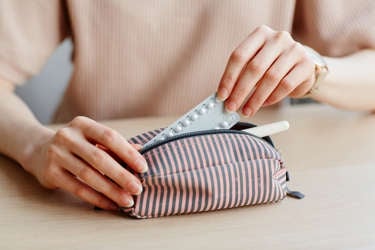The medications you need after transplant will usually have some side effects. If you are having side effects, tell your transplant team, but do not stop or change your medications before letting the team know. It is always really important you take your medications as prescribed so your transplant organ can stay healthy.
It is also really important to follow a careful diet if you experience certain side effects from one or more of the following medications that help your body accept your new organ:
Remember too that you are less able to fight infections while you’re on medications such as tacrolimus, cyclosporine and sirolimus. You can cut your chances of getting sick by handling and storing food carefully.
You can get more information about each medication and its other common side effects in the medications section.
Tacrolimus
General diet tips when taking tacrolimus
- Drink lots of fluid.
- Take tacrolimus each day with a meal or with the same gap before or after a meal. Food can affect how tacrolimus passes from your stomach to the rest of your body.
- To keep a healthy level of tacrolimus in your blood, avoid all forms of grapefruit. This includes:
- fresh grapefruit
- hybrid fruits that have been made from grapefruit (such as pomelo or tangelo)
- grapefruit juice
- fruit cocktails or fruit salads that could contain grapefruit
- any fruit punch containing grapefruit
- anything with “citrus fruits” as an ingredient, as the fruits could include grapefruit
Tacrolimus and weight loss
Tacrolimus can cause you to lose your appetite. If you feel you’re losing weight, ask your dietitian if there’s anything you can do to regain it, for example by eating energy-boosting foods.
How to control other side effects of tacrolimus
| Possible side effect | What type of diet may help |
|---|---|
| High blood pressure or puffiness (edema) | Low-sodium, or low-salt, diet |
| High blood sugar | Low-sugar diet (less than 8 g added sugar per serving; no limit on foods that contain natural sugar) |
| High potassium levels | Low-potassium diet |
| Low magnesium levels | High-magnesium diet and/or magnesium tablets |
| High cholesterol | Cholesterol-lowering diet |
Your transplant team will always tell you what diet to follow to manage your own side effects, if you have any.
Cyclosporine
General diet tips when taking cyclosporine
- Drink lots of fluid.
- To keep a healthy level of cyclosporine in your blood, avoid all forms of grapefruit. This includes:
- fresh grapefruit
- hybrid fruits that have been made from grapefruit (such as pomelo or tangelo)
- grapefruit juice
- fruit cocktails or fruit salads that could contain grapefruit
- any fruit punch containing grapefruit
- anything with “citrus fruits” as an ingredient, as the fruits could include grapefruit

Cyclosporine and weight loss
Cyclosporine can cause you to lose your appetite. If you feel you’re losing weight, ask your dietitian if there’s anything you can do to regain it, for example by eating energy-boosting foods.
How to control other side effects of cyclosporine
| Possible side effect | What type of diet may help |
|---|---|
| High blood pressure | Low-sodium, or low-salt, diet |
| High blood sugar | Low-sugar diet (less than 8 g added sugar per serving; no limit on foods that contain natural sugar) |
| Low magnesium levels | High-magnesium diet and/or magnesium tablets |
| High cholesterol | Cholesterol-lowering diet |
Your transplant team will always tell you what type of diet to follow for your particular side effects, if you have any.
Sirolimus
General diet tips when taking sirolimus
- Drink lots of fluid.
- To keep the levels of sirolimus in your blood to a healthy level, avoid all forms of grapefruit. This includes:
- fresh grapefruit
- hybrid fruits that have been made from grapefruit (such as pomelo or tangelo)
- grapefruit juice
- fruit cocktails or fruit salads that could contain grapefruit
- any fruit punch containing grapefruit
- anything with “citrus fruits” as an ingredient, as the fruits could include grapefruit
How to control specific side effects of sirolimus
Sirolimus can cause high cholesterol levels, so you may need to follow a cholesterol-lowering diet. You may also need to take a medication to lower your cholesterol.
Enalapril
Enalapril is used with a low-sodium diet to treat high blood pressure.
The main side effects of enalapril are high potassium levels, which you can limit by following the tips below.
General diet tips when taking enalapril
- Drink the usual amount of fluid recommended by your transplant team.
How to control specific side effects of enalapril
| Possible side effect | What type of diet may help |
|---|---|
| High potassium levels | Low-potassium diet |
Your transplant team will always tell you what type of diet to follow for your particular side effects, if you have any.
Prednisone
Prednisone is a steroid drug that can come with a number of side effects, including:
- increased appetite and weight gain
- high blood pressure
- high blood sugar levels (which could lead to diabetes if they are not controlled)
- high cholesterol levels
- a higher risk of developing osteoporosis
General diet tips when taking prednisone
While taking prednisone, you need to eat a healthy and balanced diet of foods that are:
- low in sodium (often called salt)
- low in sugar (less than 8 g added sugar per serving; no limit on foods that contain natural sugar)
- low in calories to maintain a healthy body weight
- low in cholesterol
- high in calcium and vitamin D
Reading nutrition facts tables and food labels
Check out this table to see exactly how much of each nutrient you should aim for in a serving size.
| Nutrient | Amount | Percent daily value |
|---|---|---|
| Total fat | Less than 20% | |
| Saturated fats | Less than 10% | |
| Cholesterol | Low | |
| Sodium | Less than 200 mg per serving | Less than 8% |
| Sugar | Less than 8 g added sugar per serving (no limit on foods that contain natural sugar) |

Eating a low-calorie diet
Because prednisone can make you hungrier, choosing foods that are low in calories will stop you from gaining too much weight. You will probably gain a little weight while taking prednisone, but gaining too much is harmful: it can lead to overweight, obesity and other health problems.
Low-calorie foods include:
- fresh or frozen fruit and vegetables
- high-fibre grains
- low-fat dairy products
- lean meats and alternatives
The page on maintaining a healthy body weight has other healthy eating recommendations based on Canada's Food Guide.
Eating foods rich in calcium and vitamin D
Steroids such as prednisone cause your bones to lose calcium, which can lead to osteoporosis. When you have osteoporosis, your bones are weaker and have a higher chance of breaking. Making sure you get enough calcium and vitamin D in your diet can help make your bones stronger. You can also strengthen your bones with weight-bearing exercise.
How much calcium and vitamin D you need
Between the ages of nine and 18, you need an average of 1300 mg calcium and 600 IU vitamin D every day. Good sources of calcium and vitamin D include low-fat milk products such as low-fat yogurt, skim milk and low-fat cheese.
Some people need more vitamin D, depending on their individual situation. Your transplant team or dietitian will let you know how much you may need.







